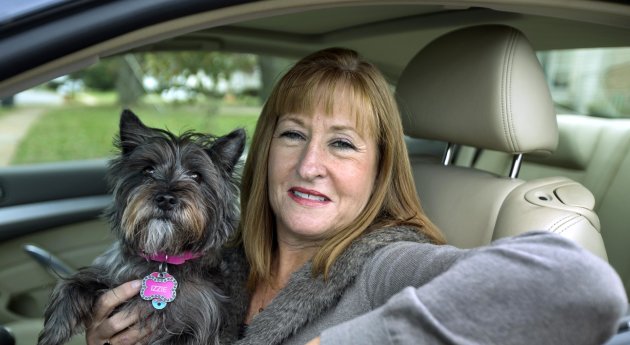
Women have passed men on the nation's roads. More women than men now have driver's licenses, a reversal of a longtime gender gap behind the wheel that transportation researchers say is likely to have safety and economic implications. If current trends continue, the gap will only widen. The share of teens and young adults of both sexes with driver's licenses is declining, but the decline is greater for young men, according to a study by the University of Michigan's Transportation Research Institute. The study looked at gender trends in driver's licenses between 1995 and 2010.
"The changing gender demographics will have major implications on the extent and nature of vehicle demand, energy consumption, and road safety," predicted Michael Sivak, co-author of the study. Women are more likely than men to purchase smaller, safer and more fuel-efficient cars; to drive less, and to have a lower fatality rate per distance driven, he said.
Over the 15 years the study covered, the share of men ages 25 to 29 years old with driver's licenses dropped 10.6 percent. The share of women of the same age with driver's licenses declined by about half that amount, 4.7 percent.
Male drivers outnumbered women drivers from the moment the first Ford Model T rolled off the assembly line in 1908, the year the automobile became popular, and through most of the last century. In the 1950s, when only about half of adult women had driver's licenses, jokes about women drivers were a staple of comedians.
But the gap gradually closed. By 1995, men with driver's licenses slightly outnumbered women, 89.2 million to 87.4 million. By 2010, 105.7 million women had licenses, compared with 104.3 million men.
Likewise, in 1995 men with driver's licenses outnumbered women in every age group except those over 70. By 2010, women outnumbered men among drivers ages 45 and older and between ages 25 and 29 years old. The share of older women who are also on hanging onto their driver's licenses has also increased.
"I want to be in my own car for as long as possible. I want to be independent for as long as I can," said Diane Spitaliere, 58, a retired government worker in Alexandria, Va.
Male drivers under age 44 are still slightly more numerous than women of the same age, but that's only because young men outnumber young women in the general population, the study said. There now are 105 boys born each year for every 100 girls in the U.S. Women outnumber men later in life because they live longer — an average of 80 years for women, compared with about 75 years for men.
Rising Internet usage may be part of the reason for the decline in the share young drivers, especially young men, Sivak said. A previous study by the transportation institute published earlier this year found that countries that have higher Internet usage also have a lower licensure rate of teens and young adults.
"There is some suggestive evidence that Internet contact is reducing the need for personal contact," he said.
Other researchers have theorized that digital media and technology may make driving less desirable and public transportation more convenient. Texting while driving is dangerous and illegal in most states, but there's no risk to texting or working on a laptop while riding a bus or train. Some transit systems have been seeing significant increases in riders.
Another reason for the growing disinterest among young men in driving may be the erosion of the "car-fetish society," travel behavior analyst Nancy McGuckin said. "Today's young adults grew up in the back seat of cars stalled in congestion, hearing their folks swear at the endless traffic. Nothing romantic about that!"
It is also "no longer cool, or even possible, to work on your own vehicle. The engines are so complex most people don't even change their own oil," she said. "Independence, freedom, being able to customize the car to reflect you — these are not part of young people's association with vehicles."
There also may be economic reasons for the shift, McGuckin's research indicates. Employment of 16- to 24-year-olds as a share of all workers has declined. At the same time, the rate of young men ages 18 to 34 years old living at home has been going up and is greater than the rate of young women living at home.
It may be that unemployment and underemployment have made auto insurance unaffordable for young men, said Alan Pisarski, author of the Transportation Research Board's comprehensive "Commuting in America" reports on U.S. travel trends. "Insurance for males under 25 is just colossally expensive," he said.
There has also been a sharp decline in vehicle trips and the number of miles traveled by vehicle for 16- to 29-year old males, according to McGuckin's analysis of massive government travel surveys between 1990 and 2009. The declines for women were not as great.
"The car companies are very worried," she said.
Gloria Berquist, vice president of the Alliance of Automobile Manufacturers, said the alliance is aware that the share of teens and young adults obtaining driver licenses is dropping, although the association hasn't seen the research on the gender differences.
"Some research has shown that young adults today connect with their friends through their smartphones, but at some point younger consumers still need to get from here to there, and a car is still a priority where public transportation is unavailable or limited," she said. "This is especially true for younger adults when they enter the workforce."

No comments:
Post a Comment